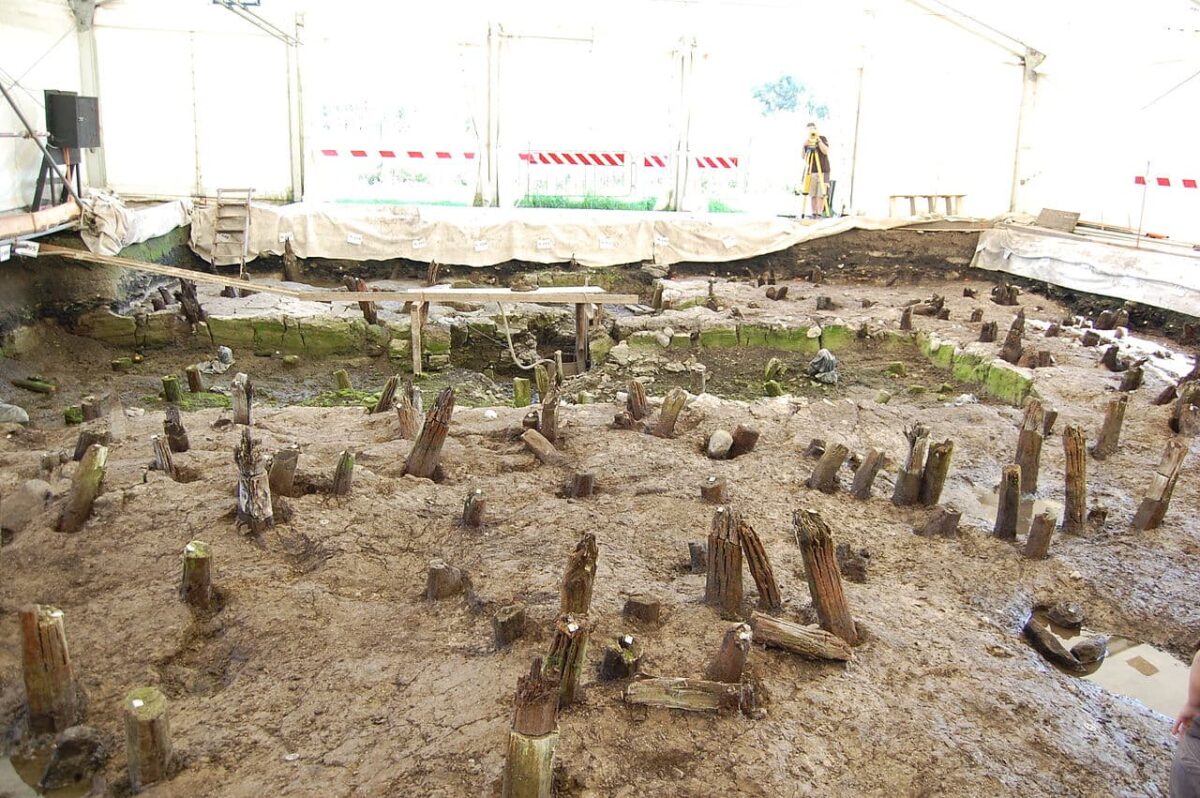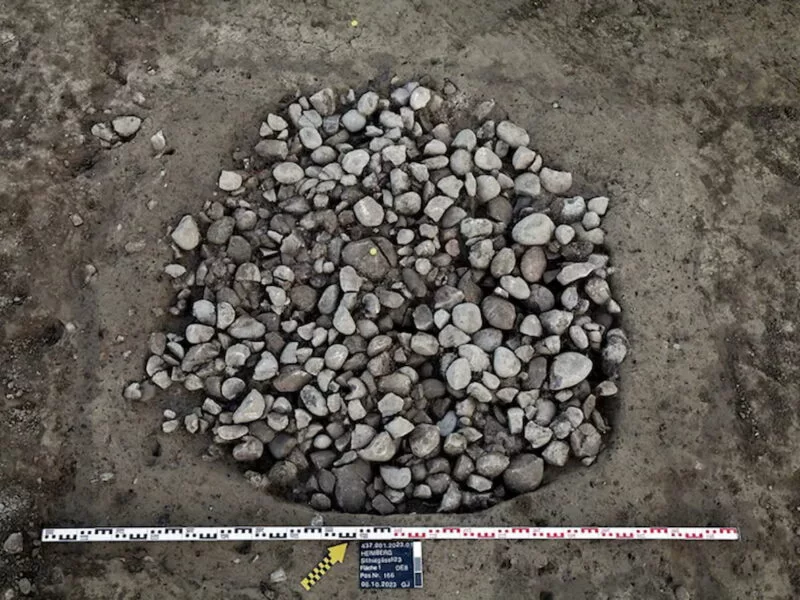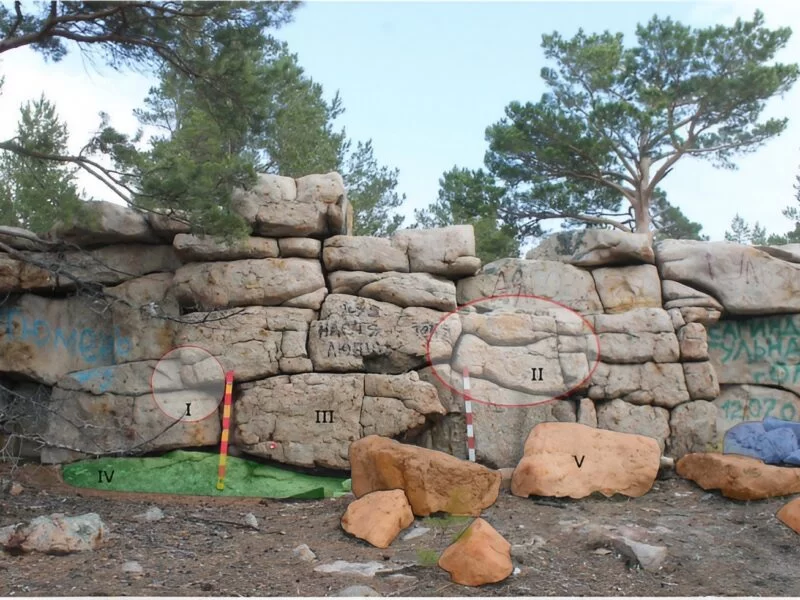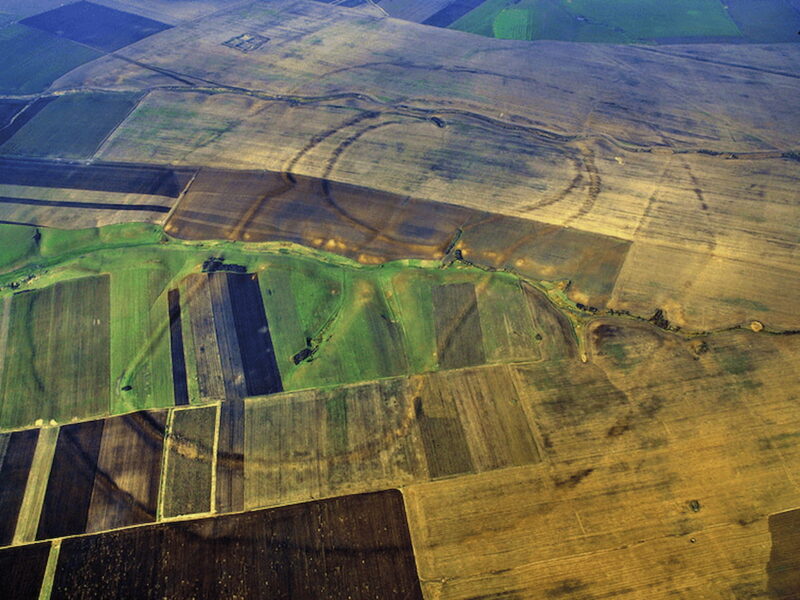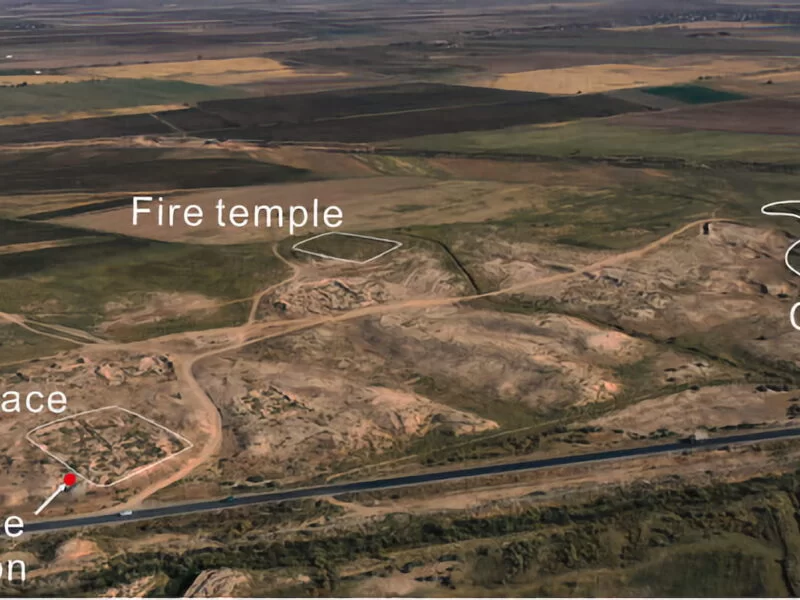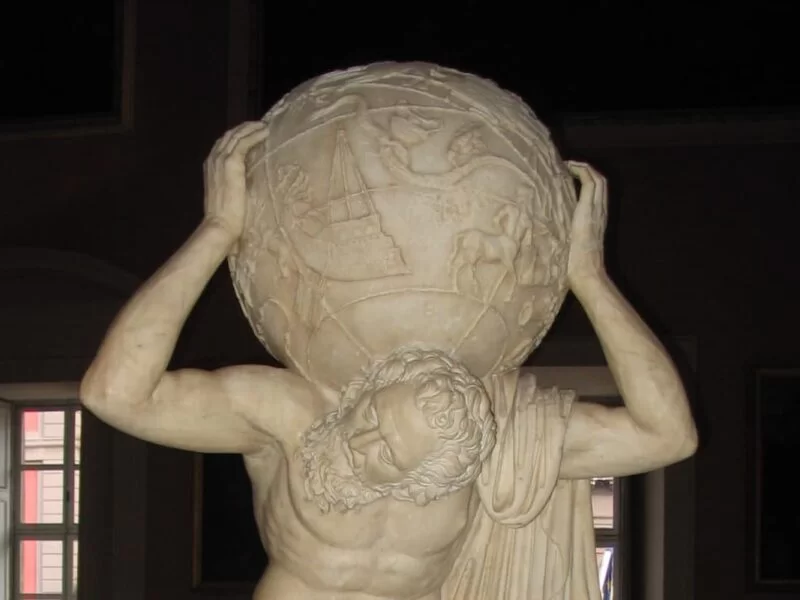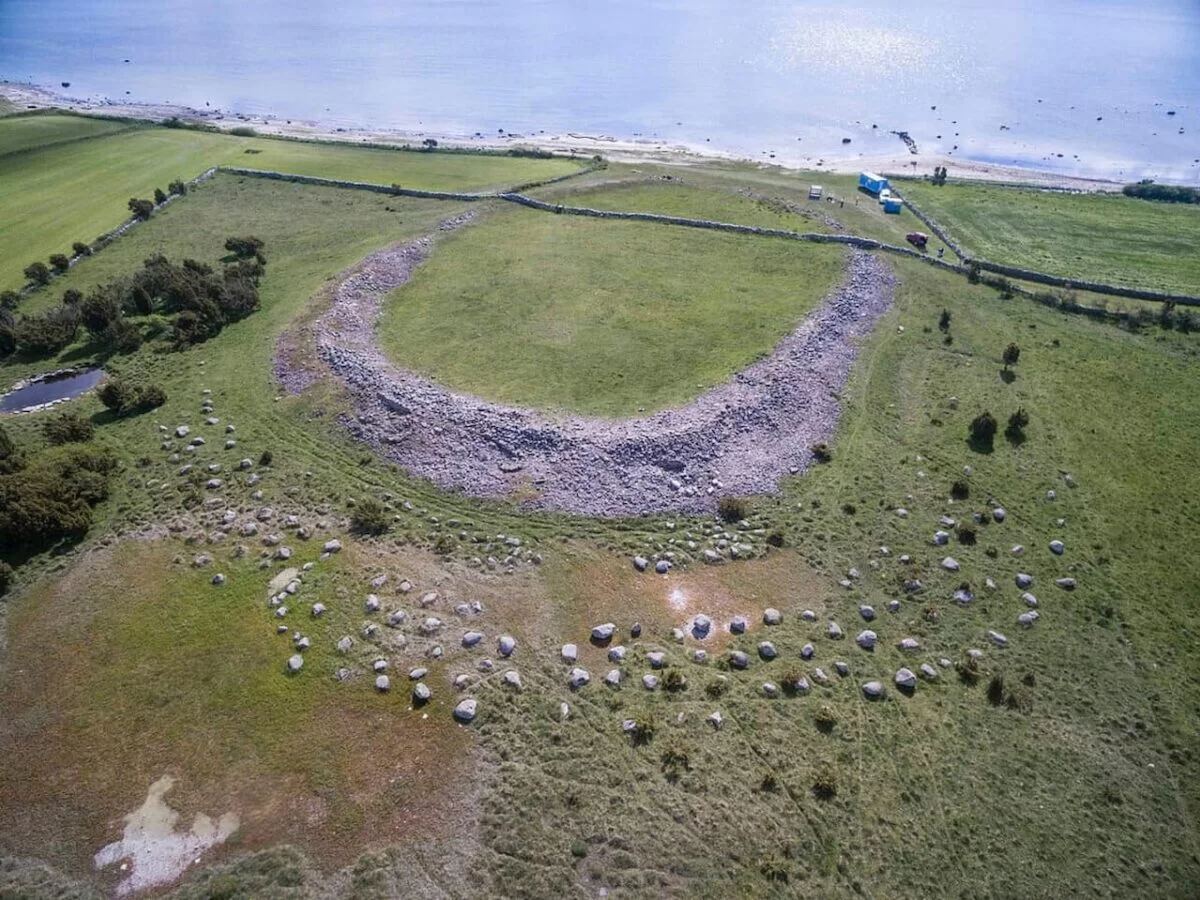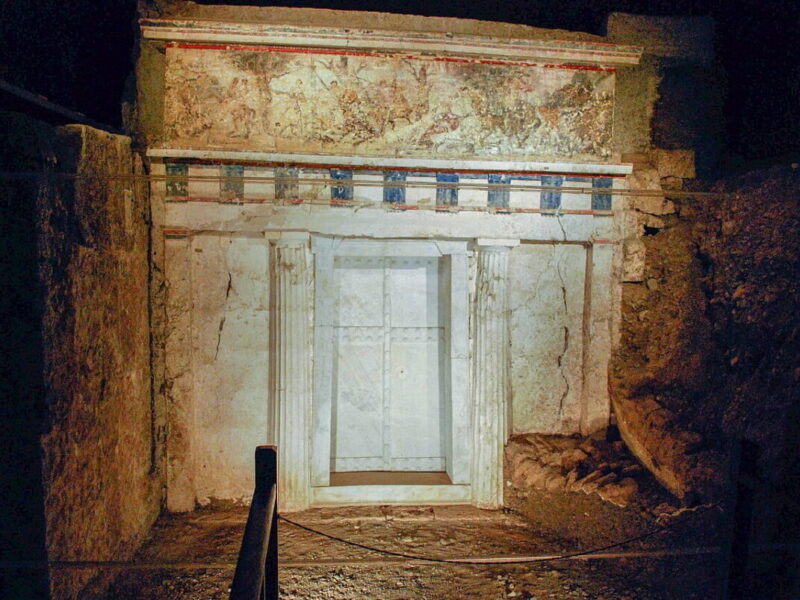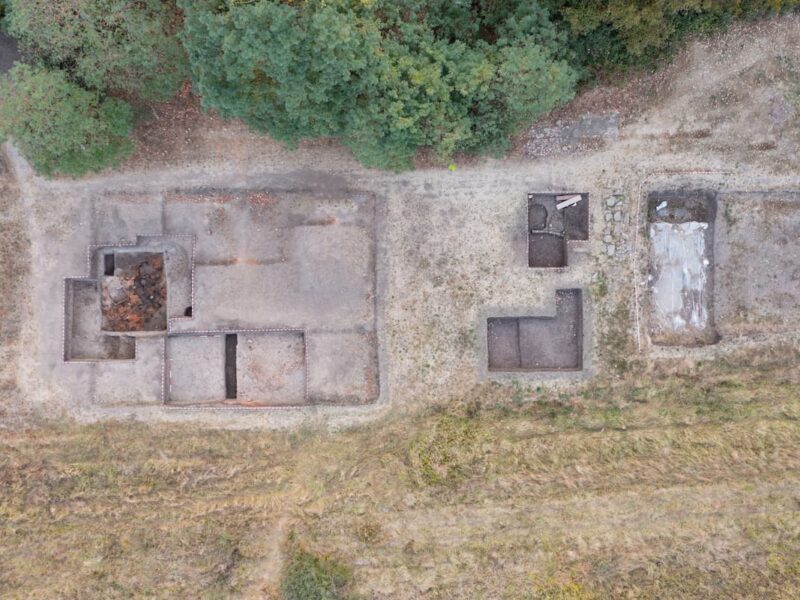Located in the Lombardy region, near the impressive Lake Garda, the archaeological site of Lucone di Polpenazze is a living testament to Prehistory in northern Italy. This place, a large natural basin that in ancient times housed a small body of water, has witnessed a series of discoveries that have allowed archaeologists to reconstruct fragments of daily life and customs of the communities that inhabited the region during the Bronze Age and the Neolithic.
In 2011, Lucone was included in the UNESCO World Heritage list as part of the complex of Prehistoric Pile Dwellings around the Alps, a transnational collection of 111 sites in six countries, dating from 5000 to 500 BC.
Of the 19 pile-dwelling settlements in Italy included in this group, ten are in Lombardy, and Lucone is one of the most representative due to the richness of its findings and its excellent state of preservation.

Discoveries at Lucone began in the 16th century, when the construction of a canal partially drained the basin, revealing some archaeological remains. However, it was during the 20th century that systematic excavations began to uncover the true magnitude of the site.
In 1965, teacher Piero Simoni, along with the Gavardo Cave Group, discovered a 4,000-year-old oak dugout canoe, which became one of the site’s most emblematic finds.
The Lucone site is one of the most investigated areas of the prehistoric Alpine region, with excavations revealing at least five different settlement areas, all with occupations ranging from the Neolithic to the Bronze Age. Archaeological materials unearthed include flint and obsidian tools, ceramic fragments, and decorative objects.

One of the most recent research projects, initiated in 2007 by the Valle Sabbia Archaeological Museum, has focused on the so-called Lucone D, a smaller but no less significant section of the site. This settlement, discovered in 1986, has allowed researchers to obtain a detailed picture of life in a pile-dwelling village in the early Bronze Age.
In the year 2034 BC, a group of people began constructing a new village on the water, using large oak logs to erect the structures that supported the houses on stilts. The arrangement of the settlement and the way the houses were distributed, which were built directly over the lake, reveal the advanced engineering knowledge of these ancient communities.
Through excavation, it has been possible to document how domestic waste, which fell from the platforms of the houses, accumulated, creating a rich stratigraphy of organic and plant remains.

One of the most surprising aspects of Lucone D is that at some point, the village was ravaged by a large fire. This disaster, which destroyed most of the wooden structures, ended up preserving many elements that normally would not have survived the passage of time. Among the carbonized remains, wooden utensils, fragments of linen fabrics, and even seeds and cereal ears that were trapped in the fire have been found.
The fire that destroyed the Lucone D settlement is a perfect example of how a disaster can turn into a treasure trove of information for archaeologists. The flames not only charred organic remains that usually decompose but also fired fragments of houses made of sun-dried clay, allowing them to survive to the present.
Additionally, ceramic vessels containing burnt food remains have been found, suggesting that the inhabitants were caught by surprise, with no time to save their provisions before the fire consumed their homes.
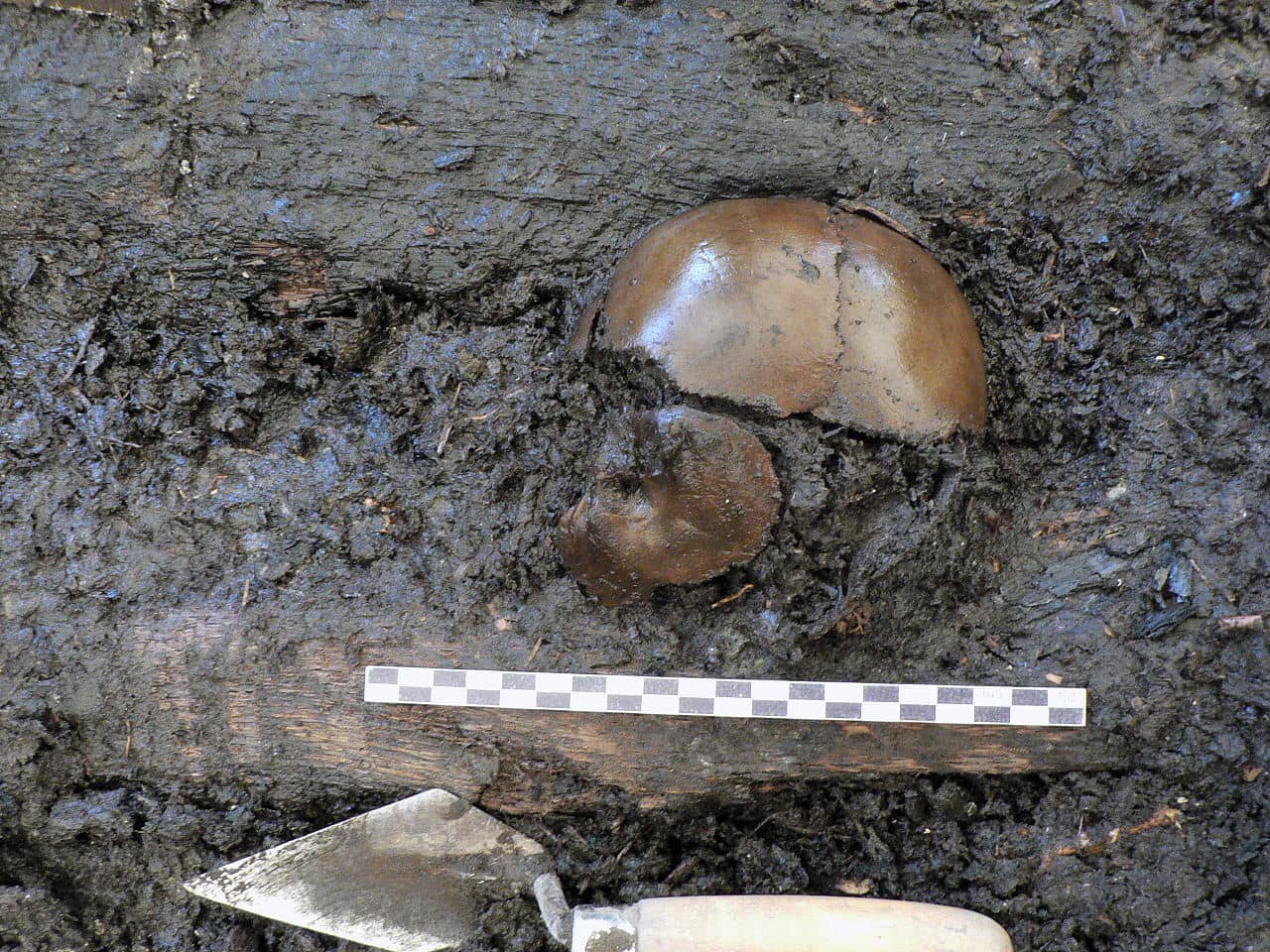
Among the most poignant finds is the skull of a child approximately four years old, intentionally placed in the lakebed, covered with bark. It is believed that this act was part of a foundation ritual to ensure the prosperity of the new settlement that was erected after the disaster.
Dendrochronological analysis of the trees felled for the construction of the village has made it possible to precisely date several episodes of occupation in Lucone D, providing detailed information about the settlement’s phases of life.
The last trees used in the construction date to 1969 BC, indicating that the new village had a longer and more prosperous life than the previous one. However, over time, a rise in the lake level led to the definitive abandonment of the area.
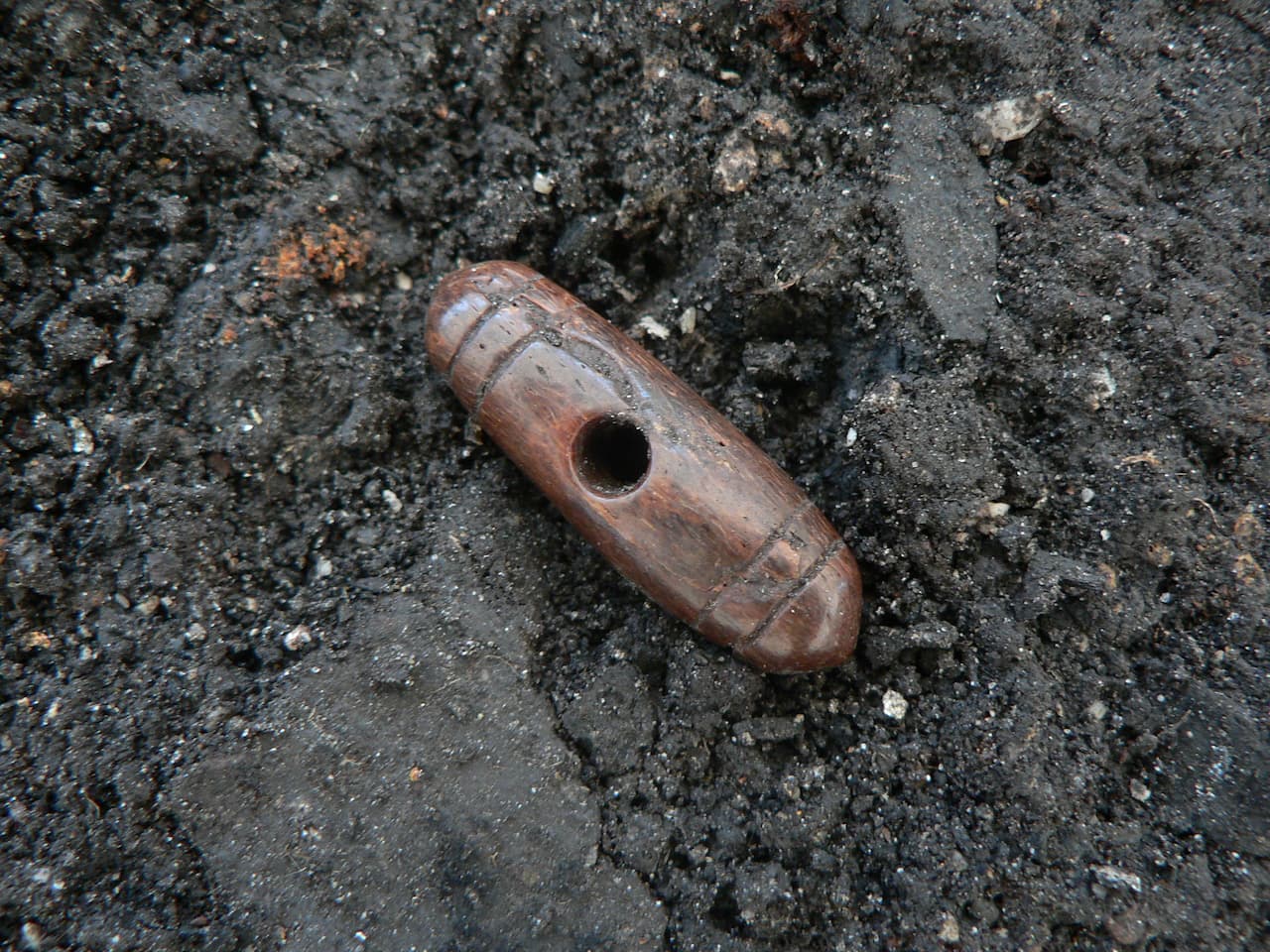
The site has provided an overwhelming amount of ceramic material, with fragments of vessels of all sizes and shapes, from tableware to large jars for food storage.
Agricultural tools, such as wooden sickles, and items related to weaving, such as loom weights and linen fragments, have also been found, suggesting a diversified economy that included both agricultural and textile production.
The finds at Lucone di Polpenazze have provided a detailed view of life in the Alpine region during Prehistory and the Bronze Age, and its inclusion in the UNESCO World Heritage guarantees its protection and preservation for future generations.
This article was first published on our Spanish Edition on October 22, 2024: Lucone di Polpenazze, el asentamiento palafítico de la Edad del Bronce que se conservó porque un incendio hizo que se derrumbara sobre el lago
SOURCES
Fasti Online, Lucone
Direzione Generale Archeologia, Lucone di Polpenazze (BS). Scavo del sito palafitticolo D
International & Swiss Coordination Group UNESCO Palafittes, Polpenazze del Garda
Museo Archeologico della Valle Sabbia, Lucone di Polpenazze – primi scavi (1965-1986)
Wikipedia, Lucone di Polpenazze
Discover more from LBV Magazine English Edition
Subscribe to get the latest posts sent to your email.

